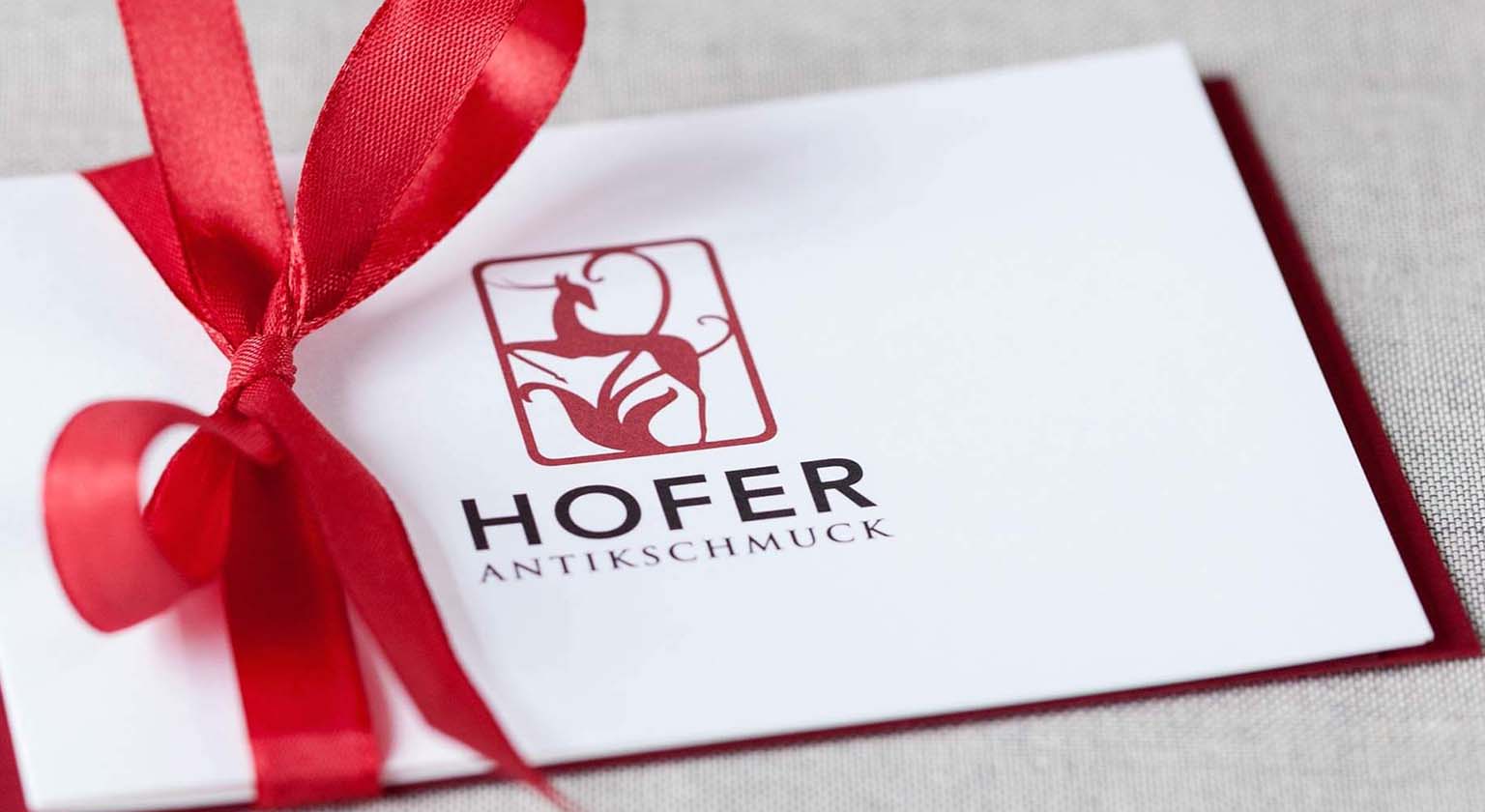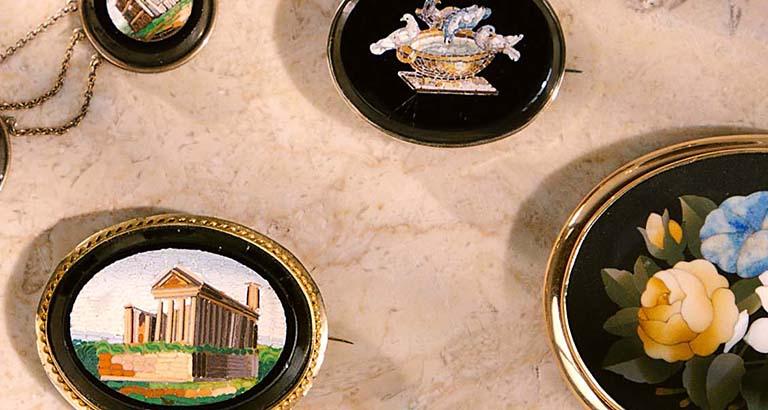ntique jewellery with micromosaics is a focus of our collection. In the late 18th century, the finest depictions of the most beautiful sights in Italy were created in Rome and Venice. At Florence, so called “Pietra Dura” objects added the sight of delightful flowers. These pieces show an accuracy and richness of detail that continues to astound us today. Discover these witnesses to lost techniques that were collected as souvenirs throughout Europe and beyond.
The idea of creating the finest mosaics in glass to adorn pieces of jewellery and small everyday objects like snuff boxes and paperweights first emerged in Rome. There, more precisely in the Vatican, a large workshop had been been operating under papal authority since around 1600, manufacturing replicas of the altarpiece in St. Peter’s Basilica. According to local accounts, the paintings had suffered greatly from the soot of the church’s candles and from high humidity caused by the many pilgrims. For that reason, the decision came to replace them with permanent mosaics using small glass stones.
At the end of the 18th century, this job was finished and the artists in the workshop had to find themselves a new line of work. In 1775, Giacomo Raffaelli and Cesare Aguatti thus came up with the idea of miniaturising the technique and began to create tiny mosaics, which became known as “mosiaci filati” – or woven mosaics. Their work soon became a coveted souvenir of the many participants in the Grand Tour, who took the detail-rich representations of buildings and ruins from the Eternal City and those of the everyday lives of its denizens home with them. Throughout the 19th century, other views were created following the examples of ancient mosaics, representations of animals and more.
The success of the Roman mosaics soon led to the opening of new workshops in other cities. Venice became an important centre where artists could look back on an own long tradition of mosaic production. Soon they created views of their city for travellers in this same style. Works for souvenirs both large and small also emerged in Florence where its own tradition of mosaic art had already existed with the Opificio delle Pietre Dure since 1588. However, the objects produced there did not consist of uniform tesserae made of glass. Here small but precisely cut plates of precious stones like agate, jade, and turquoise are set into a dark background and depicted undying still lifes of fragrant flowers.
Towards the end of the 19th century, the micromosaic technique fell into obscurity. Unable to keep pace with competition from photography, the workshops with their precious yet time-consuming work all began to close.











